Self-printed food (with banana skin) judged at TU/e
3D printers that can make chocolate cups, squirt out pizzas or serve up attractive-looking food for seniors with chewing problems already exist, but food printing is still very much in its infancy. ID student Elzelinde van Doleweerd is nurturing this baby and for her Bachelor's graduation project 'Upprinting' she asked test subjects for their opinions on the taste and structure of food she had printed and on the technology. Her dishes are made from food that would otherwise be thrown away; for most participants that caused the most surprise.
In just six months she managed to serve thirty people at TU/e two creations she had printed herself made of waste food. The savory dish is an artful ribbon of old bread and carrot that turns green as leek replaces the carrot, seasoned with Italian herbs. The sweet dish is darker in color and made of old bread, carrot and banana, including the skin, all flavored with cinnamon. Both contain butter and egg as binding agents and baking powder for airiness.
Van Doleweerd demonstrates the printing process using a mobile 3D printer in café Hubble in Luna. She explains things and as part of her story tells us that Dutch people throw away 41 kilos of food per person per year. Mainly bread, dairy products, vegetables and fruit. When the piping nozzle gets clogged: “This food printer hasn't been commercially available for that long, there's still room for improvement. Before I was able to borrow this printer from the HAS university of applied sciences in Den Bosch, I started experimenting with a piping bag.”
Baking paper
She prints the paste made of food leftovers (the banana skin and the leek are first cooked) onto baking paper. Then it is ready to be baked in the oven. Once the ribbon, cup, mat or other form is dry, it will keep for a long time.
But does it taste good? Fellow student Tjeu van Bussel thinks so. “I was expecting a bland cookie but this is much better than that. At least it won't leave me with a dry mouth.” He came along because he had never eaten 3D-printed food before, and saw the chance announced on Facebook.
Without knowing the ingredients, they discuss the taste. Once they realize they have been eating food leftovers, Master's student of Human Technology Interaction Esther van Vliet is pleasantly surprised. “I don't find the food itself that special, apart from the cool shape, but it is a really good way to make people aware of food wastage. It will no doubt take a while before it has an impact on a large scale, but this is a good idea. I also like that Elzelinde's food is healthy and is a good alternative to a cookie.”
Potential
Mechanical Engineering student Tim Jansen is already very experienced in 3D printing. For Solar Team Eindhoven he printed plastic headlight caps, steering components and cup holders. Now he is graduating in metal printing. And he is familiar with the concrete printer at Built Environment because a friend is graduating from that research group. “It is a new technique with a lot of potential. It is such a coincidence that a friend asked me only yesterday whether it's now possible to print food and soon after I saw the call for volunteers for this taste test.”
Amateur chef Van Doleweerd is pleased with the tasting session. She has received a lot of feedback that she can put to good use in her study of food technology. She is keen to optimize the recipe and design, but her chief delight is in filling the 3D printed cups and incorporating them into a proper dish. "It makes me happy to see people's enthusiastic reactions when I serve an unusual, attractive-looking dish, one that also tastes delicious!"
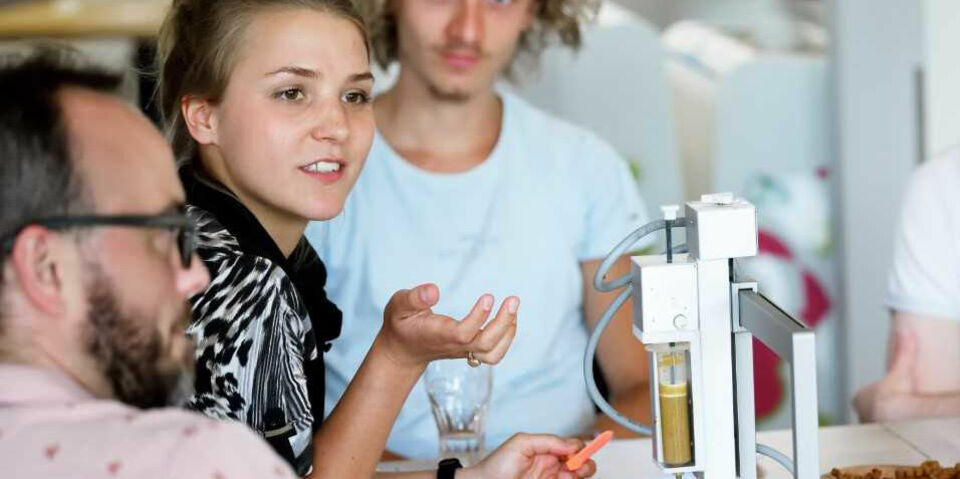

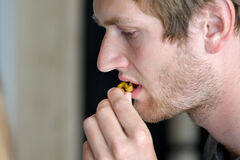
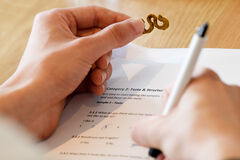
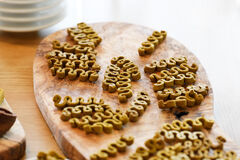
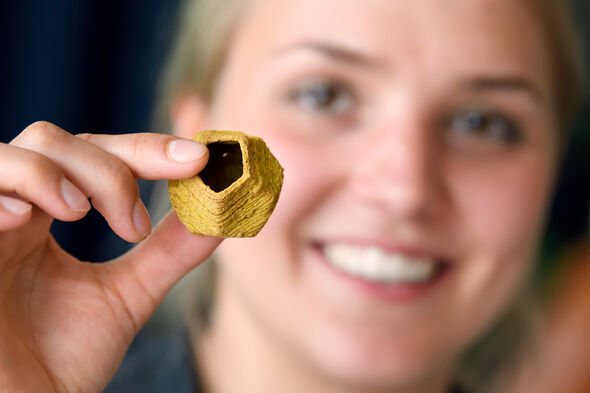
Discussion